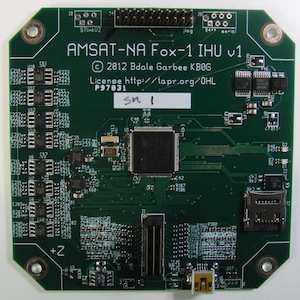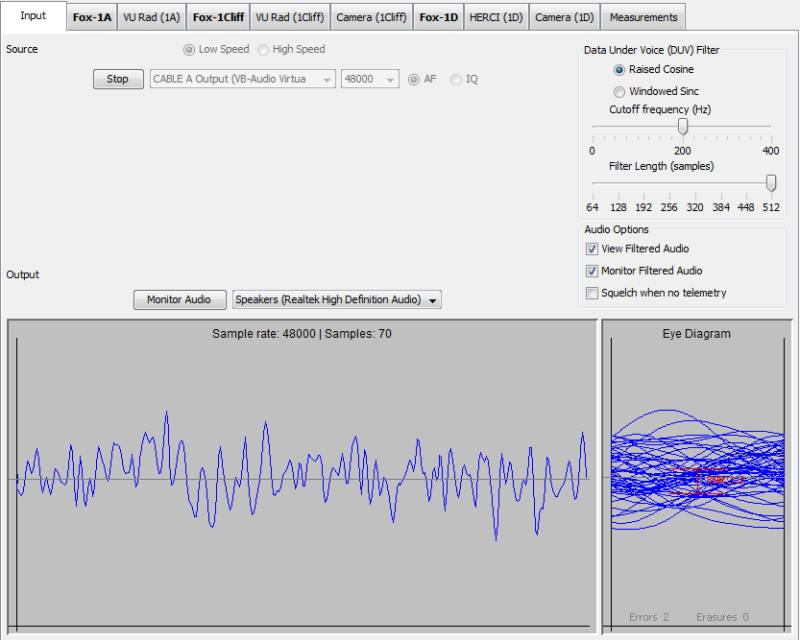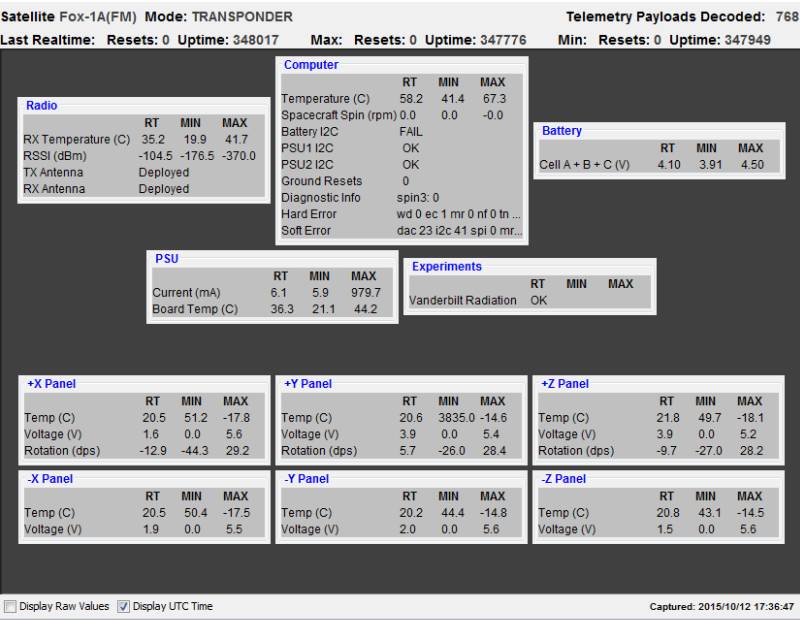 FOX Project
FOX Project
Why two satellites? The original Fox Engineering Team Study was for a baseline satellite, with several options for enhancements. At that time, AO-51 was functioning well, with no indication that its lifetime would be short enough to impact the Fox Project. With the impending loss of AO-51, it was decided to break the Fox Project up into a quickly deployable baseline FM replacement satellite.
Fox-1, and a second more flexible satellite, Fox-2. Fox-2 will benefit from the development work of the baseline Fox-1, with the addtional time being applied to developing its more sophisticated power and Software Defined Transponder (SDX) communications systems.
Introduction
- 1-Unit CubeSat (10 x 10 x 10)
- Target orbit 650 km
- Magnetically stabilized
- FM transponder
- IHU for telemetry and command
- Science experiment
- FSK Telemetry using subaudio
- ZombieSat
ZombieSat
This function is designed to extend usable life time by using the following technology: FM Transponder will operate with dead cpu, without groundstation intervention, while in sunlight even with dead (shorted) battery.
 FOX-1A (AO-85)
FOX-1A (AO-85)
Fox-1A will be an easy-to-operate, FM transponder satellite, one with very similar operating characteristics to those of AMSAT OSCAR-51. The project will introduce the concept of designed-in, partial-failure operation. The satellite will be specifically designed so that when the battery fails, the transponder can continue to operate when the satellite is in sunlight. Similarly, the satellite will be designed so that the FM transponder can operate without relying on the IHU. These modes are intended to extend the usable life of the satellite.
Orbital parameters
Name FOX-1A NORAD 40967 COSPAR designation 2015-58D Inclination (degree) ? RAAN ? Eccentricity ? ARGP ? Orbit per day ? Period ? Semi-major axis ? Perigee x apogee ? Drag factor ? Mean Anomaly ?
TLE (13-10-2015)
FOX-1A 1 90747U 15286.49403807 +.00001891 +00000-0 +21258-3 0 00074 2 90747 064.7778 276.6321 0217755 280.3643 225.3523 14.74250622000597
Downlink
145.980 MHz FM
Uplink
435.180 MHz FM
Telemetry


Fox-1a Telemetry Receiver: PE0SAT 96 bytes of telemetry was received on Fri, 09 Oct 2015 17:56:03 UTC Fox ID=1, reset count=0, uptime=89991, type=1 Rx Antenna Deploy=1, Tx Antenna Deploy=1,Telemetry Reset Count=0 Vulcan Communications OK Battery I2C Telem Failure=1, PSU1 I2C Telem Failure=0, PSU2 I2C Telem Failure=0 Converted values: Battery Voltage= 4.0, IHU Junction Temp=66.8C +X Panel Volts= 3.8, +Y Panel Volts= 1.7, +Z Panel Volts= 3.8 -X Panel Volts= 3.8, -Y Panel Volts= 3.8, -Z Panel Volts= 1.7 +X Panel Temp=13.7C, +Y Panel Temp=15.1C, +Z Panel Temp=13.8C, PSU Current= 0.0 ma -X Panel Temp=16.5C, -Y Panel Temp=17.2C, -Z Panel Temp=16.8C, PSU Temp=43.8C X MEMS=-11.0 dps, Y MEMS=19.9 dps,Z MEMS=-11.7 dps) Receiver: Temp=41.7C, RSSI=-117.1 dbm
Status
Fox-1A will be launched on August 27, 2015 on a United Launch Alliance Atlas 5 rocket from Vandenberg Air Force Base, California on the NROL-55 flight for the U.S. National Reconnaissance Office. Fox-1A is launched as part of the GRACE (Government Rideshare Advanced Concepts Experiment) auxiliary payload on the NROL-55 mission October 8, 2015 from Vandenburg AFB on an Atlas V vehicle and is active.
RadFXSat/Fox-1B
Downlink
Uplink
Status
Launch: Amsat-NA announce that the NASA ELaNa proposal for RadFxSat/Fox-1B has been accepted.
Fox-2
Fox-2 will be developed following and using experience gained from Fox-1 and have a sophisticated power and Software Defined Transponder (SDX) communications systems.
Downlink
Uplink
Status
Launch: TBD
Homepage and other references:
Amsat FOX project page: Fox
